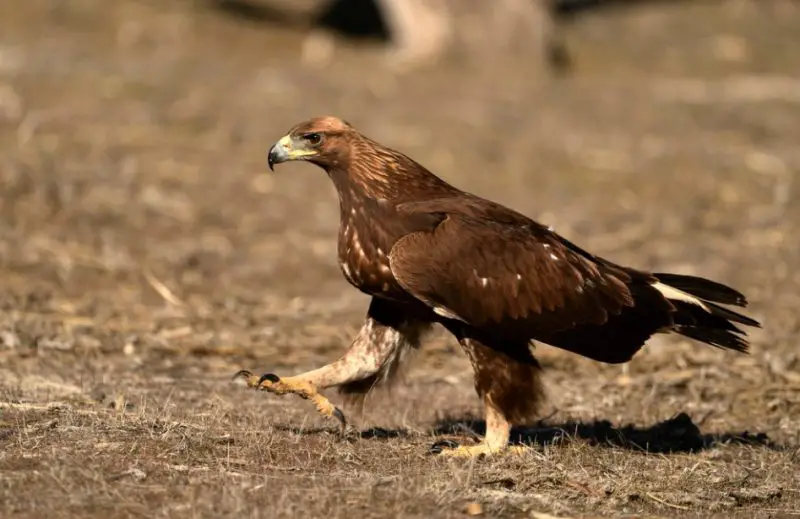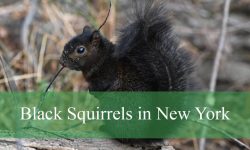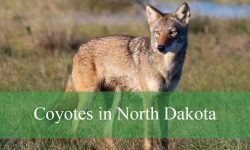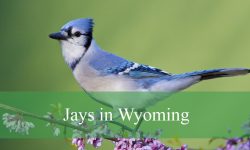South Dakota’s wide-open skies, rolling prairies, and rugged hills are home to some of the most majestic raptors in North America, the eagles. These powerful birds are symbols of strength and freedom, and spotting one soaring high over a river or perched in a cottonwood is an unforgettable experience.
While several eagle species exist worldwide, only two types of eagles are regularly found in South Dakota: the Bald Eagle and the Golden Eagle. Each species has its own unique characteristics, habitats, and behaviors that make them remarkable in their own right.
In this detailed guide, you’ll learn how to identify these eagles, where to see them in South Dakota, what they eat, and the best times to spot them in the wild. You’ll also find fascinating facts and expert birding tips to make your next eagle-watching trip a success.
1. Bald Eagle (Haliaeetus leucocephalus)

Identification and Appearance
The Bald Eagle is easily the most recognizable bird of prey in North America. Adults have a striking white head and tail that contrast sharply with their dark brown body and wings. Their bright yellow eyes, hooked beak, and strong talons give them an unmistakable, commanding presence.
Juvenile Bald Eagles look very different. They are mostly brown with mottled white markings on their wings and body. They don’t develop the classic white head and tail until about five years old, which often leads people to mistake them for Golden Eagles.
Adults typically have a wingspan of 6.5 to 7.5 feet (2 to 2.3 meters) and weigh between 8 to 14 pounds (3.6 to 6.3 kilograms), with females being about 25% larger than males. When soaring, their wings appear flat and broad, and they often hold them horizontally.
Habitat and Distribution in South Dakota
In South Dakota, Bald Eagles are most commonly found near large lakes, rivers, and reservoirs. They are particularly numerous along the Missouri River, Lake Oahe, and Gavins Point Dam, where fish are abundant and large trees provide ideal nesting sites.
During the winter months, Bald Eagles migrate south from Canada and northern states to South Dakota, where open water allows them to hunt fish. You can see dozens gathered near dams and reservoirs during cold spells, perched in trees or gliding low over the water.
Some pairs remain year-round residents, especially in the western and central parts of the state, where food remains available even in winter.
Diet and Hunting Behavior
Bald Eagles are primarily fish eaters, preferring species like trout, perch, and carp. However, they are opportunistic and will eat waterfowl, small mammals, and carrion when fish are scarce.
They hunt by swooping down with incredible speed, extending their sharp talons to snatch prey just beneath the water’s surface. They can lift prey weighing up to 4 pounds (1.8 kg) in flight.
Interestingly, Bald Eagles are known to steal food from other birds, especially Ospreys, a behavior known as kleptoparasitism. They also scavenge carcasses during winter when hunting conditions are difficult.
Breeding and Nesting Habits
Bald Eagles are monogamous and often mate for life. They return to the same nesting area each year, building enormous stick nests, some over 6 feet wide and 4 feet deep, in tall trees near water.
The female typically lays 1 to 3 eggs between February and April. Both parents share incubation duties, and the eaglets hatch after about 35 days. Young eagles stay in the nest for around 10 to 12 weeks before taking their first flight.
Bald Eagles usually reach sexual maturity at 4–5 years old and can live up to 30 years in the wild.
Fun Facts About Bald Eagles
Bald Eagles are not bald; the word “bald” comes from the old English term piebald, meaning “white-headed.”
Their nests can weigh over 2,000 pounds, making them the largest of any North American bird.
They have eyesight about four times sharper than a human’s, allowing them to spot prey from over a mile away.
Bald Eagles were once endangered but have made a remarkable recovery and now thrive across the U.S.
Best Time and Places to See Bald Eagles in South Dakota
The best time to see Bald Eagles is during the winter months, from November through March, when northern eagles migrate into the state. You’ll find the highest concentrations along large rivers and reservoirs.
Top viewing locations include:
- Lake Oahe and Oahe Dam near Pierre
- Fort Randall Dam and Gavins Point Dam
- Big Bend Dam
- Custer State Park and the Black Hills region
Arrive early in the morning or around sunset when eagles are most active, and bring binoculars or a spotting scope for the best experience.
2. Golden Eagle (Aquila chrysaetos)

Identification and Appearance
The Golden Eagle is one of the most powerful raptors in the world. Unlike the Bald Eagle, it has uniform dark brown plumage with golden feathers on the back of its head and neck, giving it its name.
Adults have a wingspan of 6 to 7.5 feet (1.8 to 2.3 meters) and weigh 7 to 12 pounds (3.2 to 5.4 kilograms). Juveniles are slightly lighter and have white patches at the base of the tail and under the wings, which fade with age.
Their wings are long and broad, and they often hold them in a slight “V” shape while soaring. This posture is a useful clue when identifying them at a distance.
Habitat and Range in South Dakota
Golden Eagles prefer open country such as prairies, badlands, cliffs, and grasslands, making western South Dakota, especially the Black Hills and Badlands National Park, ideal territory.
They favor rugged terrain with cliffs or rocky outcrops for nesting and vast hunting grounds where prey is abundant. These eagles are typically found year-round in the western part of the state, though some migrate south during severe winters.
Their ability to soar effortlessly for hours on rising thermal currents makes them perfectly suited to South Dakota’s wide, open landscapes.
Diet and Hunting Behavior
Golden Eagles are powerful hunters, primarily feeding on small to medium-sized mammals such as rabbits, prairie dogs, ground squirrels, and hares. They also take birds, reptiles, and carrion when necessary.
They use stealth and speed, diving at prey at speeds of up to 150 miles per hour (240 km/h). Their strong talons deliver a fatal blow almost instantly.
Unlike Bald Eagles, Golden Eagles rarely scavenge and are far more active predators. They are known to hunt cooperatively in pairs, with one bird flushing prey while the other attacks.
Breeding and Nesting
Golden Eagles build their nests, called eyries, on cliffs, steep slopes, or large trees. The nests are made of sticks and lined with grass or fur. They often return to the same nesting site each year, enlarging it over time.
Females usually lay 1 to 3 eggs in early spring. The incubation period lasts around 45 days, and chicks fledge after about 10 weeks. Golden Eagles are dedicated parents, fiercely defending their nests and young from intruders.
They reach maturity at 4 to 6 years old and can live more than 25 years in the wild.
Fun Facts About Golden Eagles
Golden Eagles have been revered in cultures worldwide, symbolizing courage and strength.
They can spot prey up to two miles away, thanks to exceptional eyesight.
Some trained Golden Eagles are used in falconry in Central Asia to hunt foxes and even wolves.
They are among the few birds capable of carrying prey almost equal to their own body weight.
Best Time and Places to See Golden Eagles in South Dakota
Golden Eagles can be seen year-round in western and central South Dakota. However, winter months from December to February bring higher numbers as northern birds migrate south.
Great viewing areas include:
- Badlands National Park
- Black Hills National Forest
- Buffalo Gap National Grassland
- Wind Cave National Park
They’re often seen soaring over open fields or perched on fence posts and rocky outcrops. Early morning or late afternoon are ideal times to watch them hunt and glide on thermals.
Tips for Watching Eagles in South Dakota
1. Bring the Right Gear
Use binoculars (8x or 10x) or a spotting scope to observe details without disturbing the birds. A camera with a zoom lens is ideal for photography.
2. Be Quiet and Patient
Eagles are highly sensitive to noise and movement. Approach viewing areas quietly and avoid sudden gestures.
3. Respect Their Space
Stay at least 100 yards from nests or perched birds. Disturbing nesting eagles can cause them to abandon their young.
4. Visit Waterways in Winter
The best chances to see Bald Eagles are near rivers and reservoirs with open water during freezing weather.
5. Use Apps or Field Guides
Birding apps like Merlin Bird ID or eBird can help you track sightings and confirm identifications in real-time.
When and Where to See Eagles in South Dakota
November to March is peak Bald Eagle season along rivers and dams.
Golden Eagles can be seen year-round in the western regions, especially the Black Hills and Badlands.
Early morning and late afternoon are the best times to see eagles actively hunting or soaring.
After snowfall or during cold snaps, eagles gather around open water sources, making them easier to spot.
Conservation Status
Both Bald and Golden Eagles are protected under the Bald and Golden Eagle Protection Act and the Migratory Bird Treaty Act. These laws prohibit harming, capturing, or disturbing eagles or their nests.
Thanks to decades of conservation work, the Bald Eagle has recovered dramatically from near extinction in the mid-20th century. The Golden Eagle population remains stable but still faces threats from habitat loss, collisions with wind turbines, and poisoning from lead ammunition.
Organizations such as the South Dakota Game, Fish, and Parks Department and the U.S. Fish and Wildlife Service actively monitor and protect eagle habitats across the state.
FAQs About Eagles in South Dakota
What are the two types of eagles found in South Dakota?
The Bald Eagle and the Golden Eagle are the two species that regularly occur in the state.
Where can I see Bald Eagles in South Dakota?
You can see them near Lake Oahe, Fort Randall Dam, Big Bend Dam, and along the Missouri River in winter.
Are Golden Eagles common in South Dakota?
Yes, they are fairly common in western and central regions, especially the Black Hills and Badlands.
What do eagles eat in South Dakota?
Bald Eagles eat mostly fish and carrion, while Golden Eagles hunt mammals such as rabbits, prairie dogs, and ground squirrels.
Are eagles protected by law?
Absolutely. Both species are protected under federal and state law, and harming them carries heavy penalties.
Can I see eagles in the summer?
Yes, though fewer in number. Golden Eagles remain year-round, while some Bald Eagles stay near lakes with consistent food sources.
How big are eagles compared to other birds?
Both species are massive, with wingspans reaching over seven feet, making them among the largest birds of prey in North America.
Final Thoughts
Eagles are truly the kings of South Dakota’s skies. The Bald Eagle, with its iconic white head, and the Golden Eagle, with its regal golden sheen, both represent the wild freedom and natural beauty of the Great Plains.
Whether you’re exploring the Black Hills, scanning the Missouri River, or simply looking up at the open sky, witnessing these powerful raptors in flight is a breathtaking reminder of nature’s resilience and grace.
With patience, respect, and a little luck, you can experience one of South Dakota’s most awe-inspiring sights—the soaring silhouette of an eagle catching the wind.






